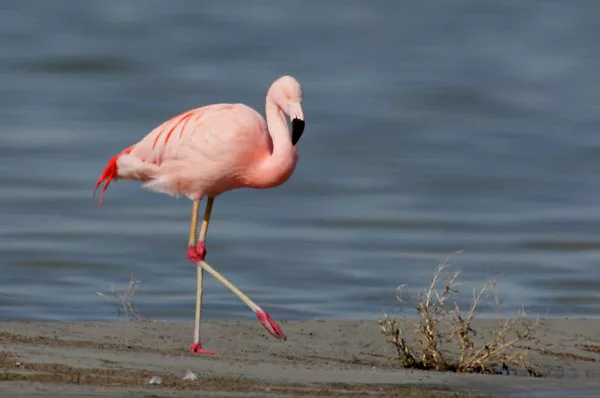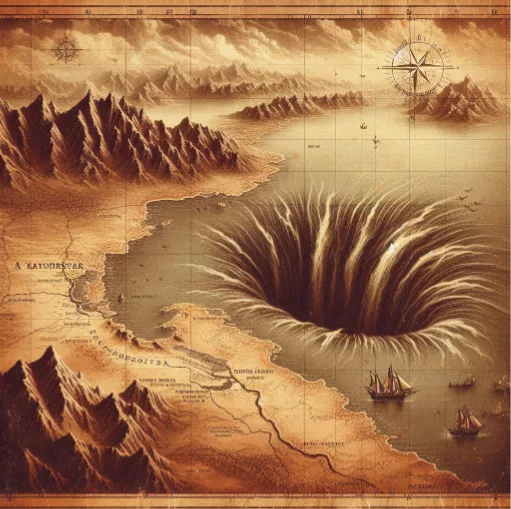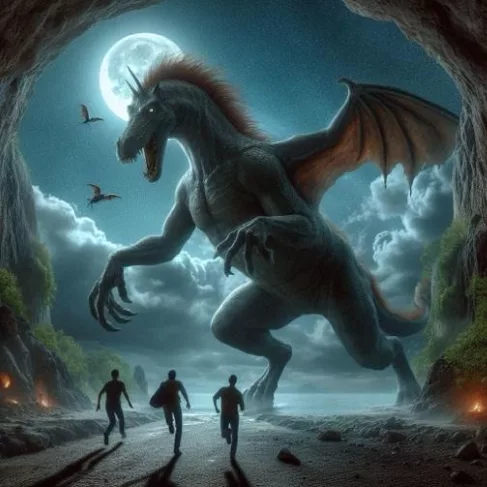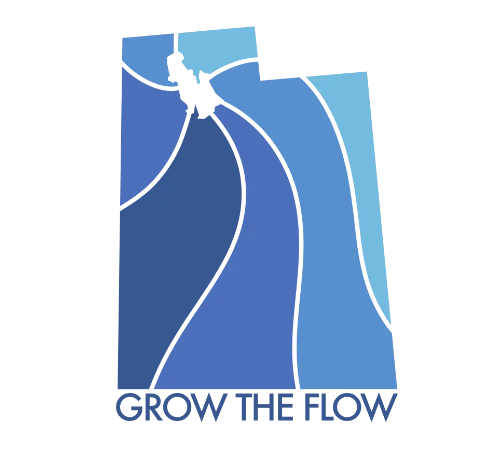What do flamingos, crocodile-bat monsters, whales, and whirlpools have in common? According to legend, they’ve all been spotted in Great Salt Lake. While most of these are simply myths that have been passed down since European settlers first arrived in the Salt Lake Valley in the late 16th century, each story has shaped the way people have imagined and interacted with Great Salt Lake.
Pink Floyd the Flamingo
For nearly two decades, one of Great Salt Lake’s most famous criminals was none other than a Chilean flamingo named Pink Floyd. In 1988, Pink Floyd escaped the Tracy Aviary after hiding during his regular wing clipping time. Once he realized he could fly, he took to the skies—and eventually made the lake his unlikely home.
At first, people thought they were seeing a prank: a plastic lawn flamingo planted in the lake. But when it moved, they couldn’t believe their eyes. One park ranger even radioed in the sighting, only to be asked if he’d spotted an elephant, too. For the first several years, rangers were tasked with trying to capture Pink Floyd, but were constantly eluded. It didn’t help that the flamingo migrated from the lake in the wintertime only to return each spring.
For the next 17 years, Pink Floyd became something of an icon—so much so that businessman Bill Platt offered to pay $25,000 to bring another dozen flamingos to the lake to “reintroduce” them into the ecosystem. Platt was certain that flamingos must have at one point frequented the lake in the distant past. This plan was quickly shut down to avoid the possibility of flamingos taking over the lake’s natural ecosystem. Pink Floyd was last seen in 2005 but in 2021 was immortalized through a mural in Salt Lake City.

Rio Buenaventura
When Spanish colonists explored the Southwest, they discovered a river flowing west and named it “Rio Buenaventura,” believing it might lead straight to the Pacific. Their maps showed two large lakes—Lake Timpanogos (a combination of today’s Utah Lake and Great Salt Lake) and Laguna de Miera (modern Sevier Lake)—but they weren’t sure which one was the source of the river.
The possibility of a direct water route from the interior West to the Pacific thrilled later explorers. For nearly a century, dozens of explorers attempted to find the river that could transform the fur trade, shipping, and travel. Sadly, Rio Buenaventura was nothing more than a cartographer’s mistake, born from poor mapping of Utah’s rugged terrain.
A related legend claimed that massive whirlpools at the lake’s southern end could suck sailors straight to the Pacific. No whirlpools have been reported in modern times—but maybe that’s only because no one’s lived to tell the tale.

Whales of Great Salt Lake
In 1888, a newspaper ran the bizarre tale of a man who claimed to have successfully brought whales to live in Great Salt Lake. According to the story, massive glass tanks were loaded onto railroad cars in California, filled with captured whales, and transported along the Union Pacific Railroad to Salt Lake City—where they were released into the lake’s briny waters.
Later reporting suggests that this story was a hoax. Still, in the decades that followed, visitors described seeing an enormous fish rise from the water and hearing low bellowing that sounded suspiciously like a whale.
Monster of Great Salt Lake
One summer evening in 1877, workers at a salt company on the lake’s north shore reported an encounter straight out of a nightmare. They claimed a huge beast emerged from the water—its head like a horse, its body like a crocodile, and wings like a bat. The monster charged at them, but they scrambled up a hill and hid in the brush until it was gone. They survived, and the legend of the Great Salt Lake monster was born. Future reports of strange sounds and creatures continued to arise over the years, but no one else has reported such a close—and terrifying—meeting since.

